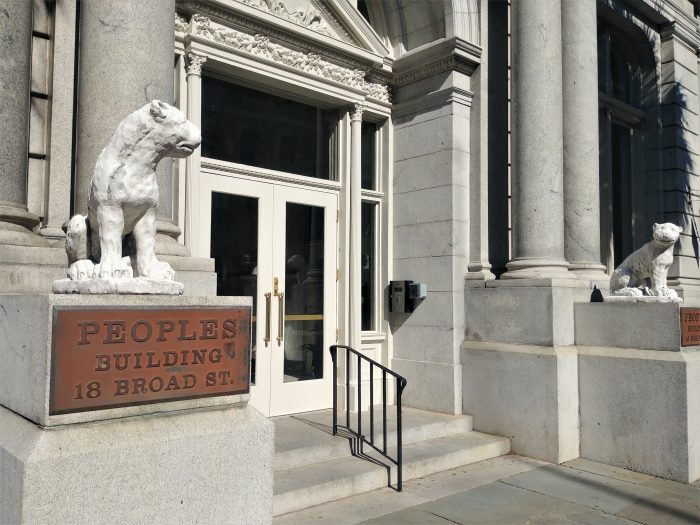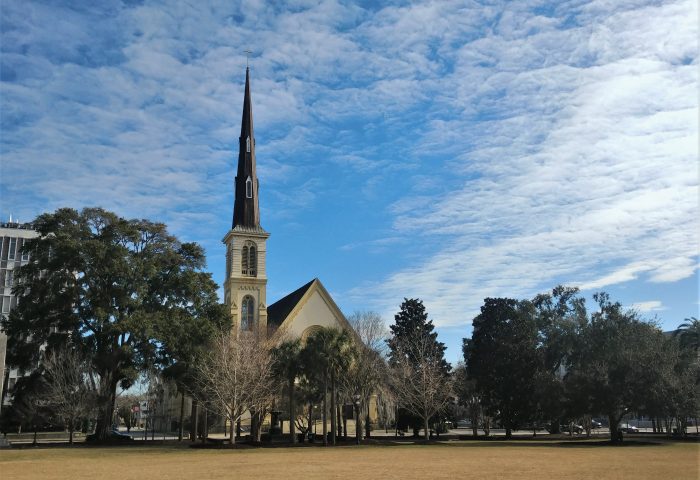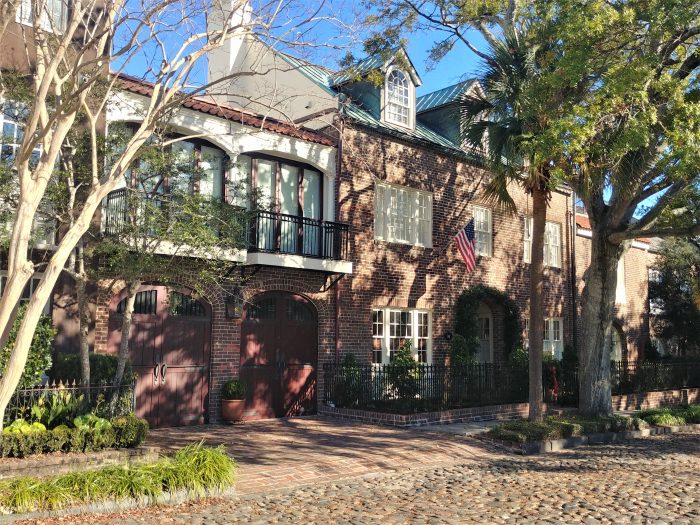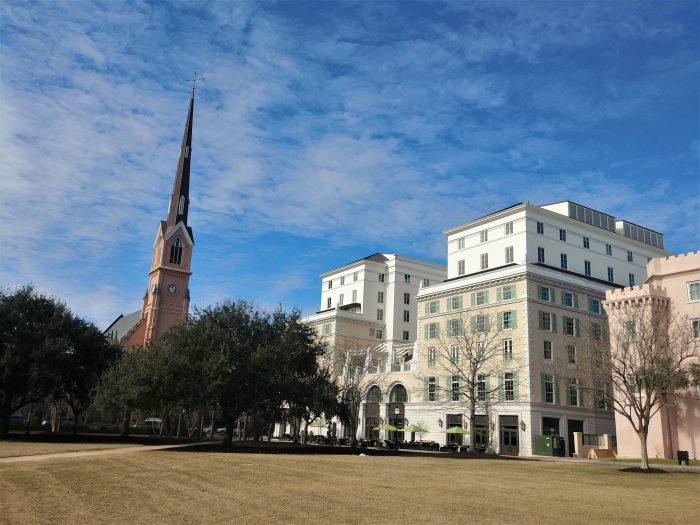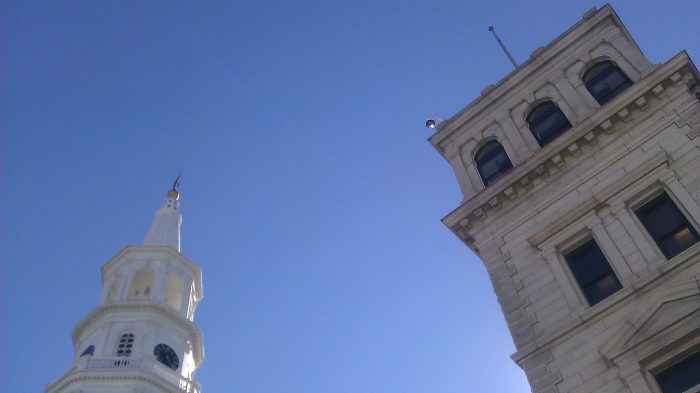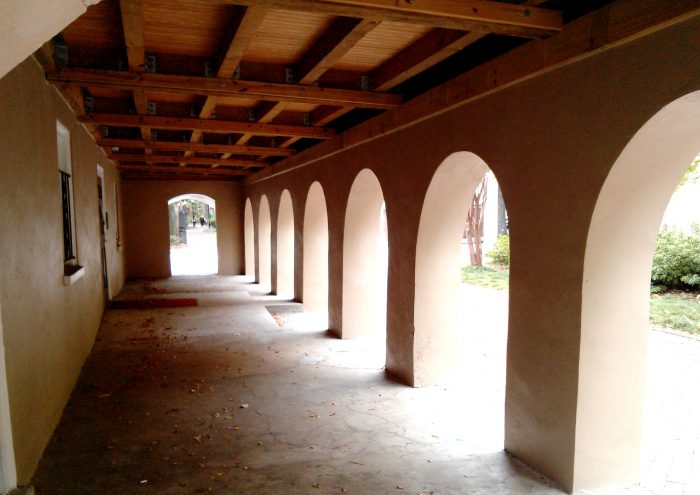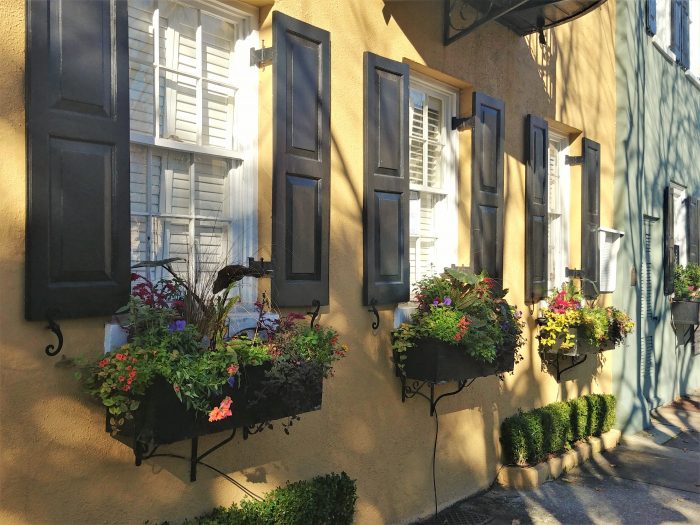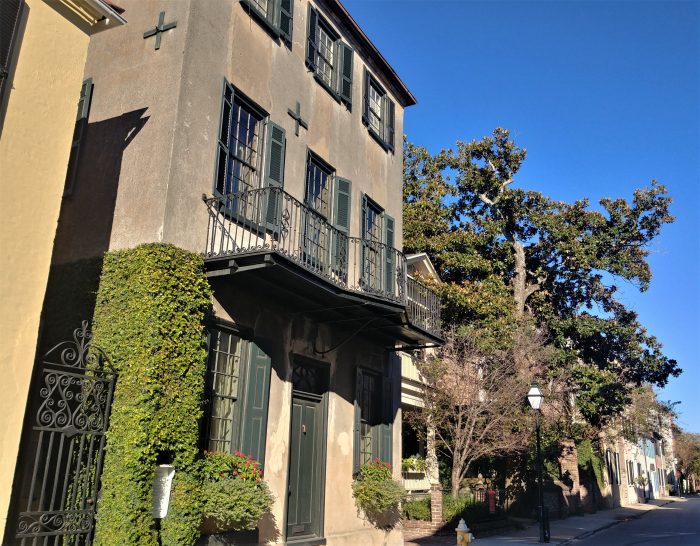Charleston’s first “skyscraper,” the Peoples Building on Broad Street was built in 1910-11 and is guarded by two leopards.
Unitarian Steeple
The steeple of the Unitarian Church looks beautiful, and a bit spooky, at night. The construction of the church began in 1772 and wasn’t completed until 1787 — as work was suspended for the duration of the British occupation of Charleston during the Revolutionary War.
We’re Number 4!
The Citadel Baptist Church, across from Marion Square, was originally to be named the Fourth Baptist Church. But, one of the preexisting Baptist churches closed — making that name inaccurate and moot. Thus, the Citadel Square (as which Marion Square was previously known) moniker.
Cobbled Together
South Adger’s Wharf is one of Charleston’s beautiful cobblestone streets. These houses were once the offices and warehouses servicing the trading ships that sailed into Charleston. The empty ships would come into Charleston with the cobblestones as ballast. As the ballast was not needed once their goods were loaded, the stones would be left in Charleston and used to “pave” the streets. The streets closest to the harbor, such as this one, were paved first.
In With The New
The Hotel Bennett, the newest hotel in Charleston opened last weekend, on the site of the old Charleston Public Library — on the corner of Marion Square. A very high end hotel, it took 13 years for it to build.
Two of Four
The Four Corners of Law at the intersection of Broad and Meeting Streets is one of the iconic spots in Charleston. Here you can see the two of the corners — the buildings representing Federal (the US Post Office and Courthouse) and God’s (St. Michael’s Church) law.
Culture Clash
Charleston is a living city, and not a museum. The historic and the modern must, and do, coexist. Here the steeple of St. Philip’s Church shares the space with some more modern technology.
Supporting Arches
These arches support the principal piazza of a 1817 house, which is now used as offices at the College of Charleston — 69 Coming Street.
Winter on Rainbow Row
These pretty window boxes can be found on the front of one of the 13 connected Georgian houses that make up the iconic Rainbow Row on East Bay Street. A classic Charleston winter scene.
Early Single
This beautiful house on Tradd Street, built in 1740, is one of the earliest examples of the Charleston single house. This one is unusual because it retained its street-front entrance.
- « Previous Page
- 1
- …
- 74
- 75
- 76
- 77
- 78
- …
- 188
- Next Page »
